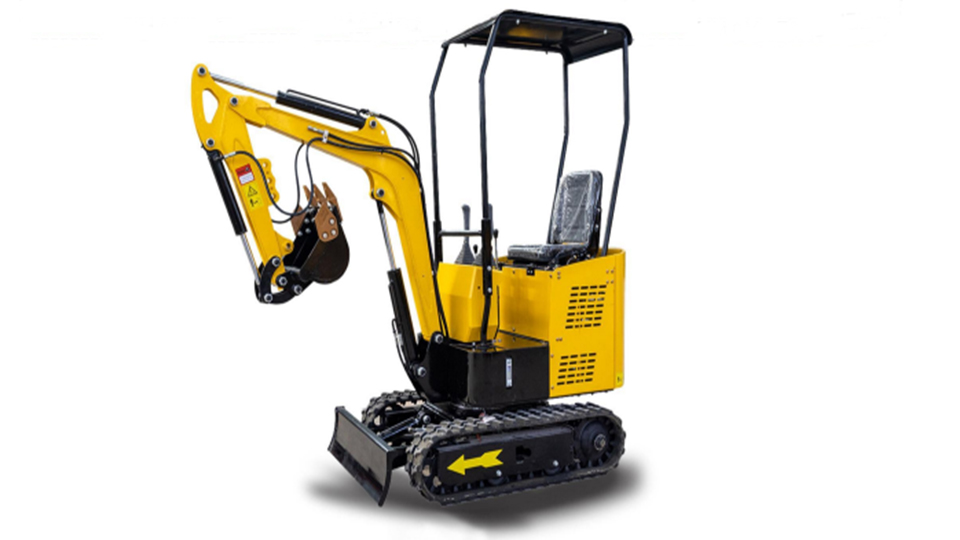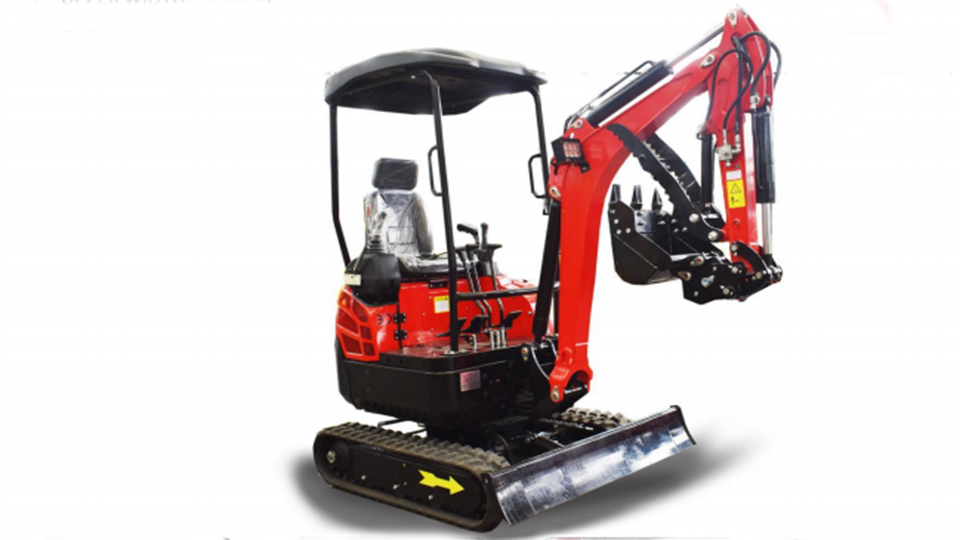Abstract
The excavator, a quintessential piece of heavy equipment, has revolutionized industries from construction and mining to demolition and agriculture. Its ability to dig, lift, and move vast quantities of earth and material efficiently has been pivotal in shaping modern infrastructure and economies. This technical article delves into the fascinating historical evolution of excavators, tracing their lineage from rudimentary, human-powered devices to the complex, powerful machines of the 20th century. We will explore key technological breakthroughs, examine influential early models, and discuss how incremental innovations in power, hydraulics, and mobility transformed these machines from curiosities into indispensable workhorses. Understanding this historical progression provides invaluable context for appreciating the sophisticated excavators of today.
1. Introduction: The Enduring Need to Dig
Humanity's need to move earth is as old as civilization itself. From ancient canals and fortifications to modern skyscrapers and highways, the ability to excavate efficiently has always been a bottleneck and a driver of progress. For millennia, this task was performed by sheer manual labor, often augmented by primitive tools like shovels, picks, and baskets. The advent of the Industrial Revolution in the 18th century, with its focus on mechanization and steam power, laid the groundwork for a profound transformation in excavation technology. This article will journey through time to explore the pivotal innovations and iconic models that defined the early and mid-history of the excavator, revealing how this powerful machine came to be.
2. The Precursors: Early Attempts at Mechanical Digging (17th - Early 19th Century)
Before dedicated excavators emerged, various ingenious, albeit rudimentary, attempts were made to mechanize digging. These often involved leveraging basic mechanical principles.
2.1. Dredges and Cranes: Water-Based Excavation
Some of the earliest forms of mechanical excavation were found in dredging operations.
Early Dredges: As far back as the 17th century, simple bucket dredges powered by animals or water wheels were used for deepening canals and harbors. These were fixed-position machines, primarily designed to scoop material from underwater. Their mechanisms, involving ropes, pulleys, and articulated arms, provided foundational concepts.
Pile Drivers and Early Cranes: The development of lifting devices like cranes, initially for building construction, also contributed indirectly. The principles of leverage, lifting heavy loads, and controlled movement would later be adapted for excavation.
2.2. Land-Based Mechanical Shovels (Early 19th Century Conceptualization)
The concept of a land-based mechanical shovel began to take shape in the early 19th century. Early patents often described steam-powered devices, though many were conceptual or produced in very limited numbers. These designs often struggled with mobility and the precise control needed for effective digging.
3. The Birth of the Steam Shovel: The First True Excavators (Mid-19th Century)
The mid-19th century marks the true genesis of the excavator with the invention of the steam shovel. This was a monumental leap, transitioning from manual labor to machine power for large-scale earthmoving.
3.1. William Otis and the "Steam Excavator" (1830s - 1840s)
The Inventor: William Smith Otis, an American inventor, is widely credited with patenting the first practical steam shovel in 1839. His design, built by the Carmichael & Fairbanks Company in Philadelphia, was revolutionary.
Key Innovations:
Single-Engine Design: Otis's design used a single steam engine to power all functions (hoist, crowd, swing) via clutches and gears. This was a crucial simplification.
Partial Swing: Early Otis shovels had a limited swing radius, typically around 180-270 degrees, as the entire superstructure sat on a fixed base, making continuous rotation difficult. The boom was attached to a kingpost.
Railway Mounted: The first steam shovels were mounted on railway flatcars, limiting their mobility but making them ideal for railway construction projects like the Western Railroad of Massachusetts.
Boom-and-Stick Configuration: The basic geometry of the boom, dipper stick, and shovel bucket, characteristic of modern excavators, was established.
Impact: The Otis steam shovel drastically increased excavation speed and capacity. It was instrumental in major civil engineering projects of the era, including canal digging, railway construction, and early mining operations. Its limitations included poor mobility off rails and manual repositioning required for digging beyond its limited reach.
3.2. Evolution of Steam Shovel Design (Late 19th - Early 20th Century)
Following Otis's pioneering work, numerous manufacturers emerged, refining the steam shovel:
Full Circle Swing: One of the most significant advancements was the development of the "full circle swing" or "revolving shovel." Companies like Bucyrus, Marion, and P&H (Pawling & Harnischfeger) led this innovation. This allowed the entire upper structure, including the engine and boom, to rotate 360 degrees, significantly increasing efficiency and versatility. This required more complex gearing and a stable turntable.

Track-Mounted Mobility: Early steam shovels on railways were cumbersome to move between sites. The late 19th and early 20th centuries saw the gradual adoption of crawler tracks (caterpillar tracks) for improved mobility over varied terrain. This transformed excavators from railway-dependent machines into self-propelled units, albeit slow ones.
Larger Capacities: As demand grew for larger-scale projects (e.g., the Panama Canal), steam shovels increased dramatically in size and capacity. Some of these colossal machines featured dipper capacities of several cubic yards.
Dipper Stick Advancements: Improvements in the dipper stick's articulation and the bucket's design led to more efficient digging and dumping.
4. The Internal Combustion Engine Revolution (Early 20th Century)
The early 20th century witnessed a paradigm shift with the widespread adoption of the internal combustion engine (ICE), first gasoline, then diesel. This marked a significant departure from steam power.
4.1. Transition from Steam to Gasoline/Diesel Power
Advantages of ICE:
Faster Startup: No need to build up steam pressure for hours.
Greater Fuel Efficiency: Diesel engines were more economical to run than steam boilers.
Reduced Maintenance: No boiler scale, less water requirement, fewer moving parts associated with steam generation.
Improved Mobility: Lighter engines allowed for more practical track-mounted designs and faster travel.
Elimination of Fireman: No need for a dedicated fireman to stoke the boiler.
Early ICE Excavators: Initially, gasoline engines were used, but diesel engines quickly became dominant due to their greater torque and fuel efficiency, especially for heavy-duty applications. Manufacturers like Bucyrus-Erie, Northwest, and Link-Belt were pioneers in this transition.
4.2. Introduction of Cable-Operated Excavators (Power Shovels)
While ICE replaced steam, the fundamental mechanism of operation remained cable-operated.
Cable-Controlled Functions: Lifting the boom, crowding the dipper stick, and swinging the superstructure were all controlled by steel cables spooled on drums, driven by the engine through a complex system of clutches and gears.
Operator Skill: Operating these machines required immense skill and coordination, as multiple levers controlled different cable drums to achieve desired movements. Feedback was largely mechanical.
5. The Hydraulic Revolution: Precision and Power (Mid-20th Century)
The mid-20th century saw the most transformative innovation in excavator history: the widespread adoption of hydraulics. This technology brought unprecedented precision, power, and control to excavation.
5.1. Early Hydraulic Attempts
The concept of hydraulic power for machinery was not new, but applying it effectively to excavators took time. Early hydraulic machines were often limited by pump technology and sealing materials.
5.2. Post-WWII Acceleration
World War II significantly advanced hydraulic technology, particularly in aircraft and military vehicles. This knowledge was then applied to civilian machinery.
5.3. The First Fully Hydraulic Excavators
France and Italy Lead: Companies like Poclain (France) and Menck (Germany, though others were experimenting) were early pioneers in developing fully hydraulic excavators in the 1950s.
Poclain TY45 (1960): The Poclain TY45 is often cited as a landmark. It was a compact, wheeled hydraulic excavator that demonstrated the immense advantages of hydraulic power. It utilized a high-pressure hydraulic system, providing precise, smooth, and powerful movements of the boom, stick, and bucket.
Advantages of Hydraulics:
Precise Control: Hydraulic cylinders allowed for much finer and more accurate control over digging depth, angle, and movements, reducing reliance on operator skill for complex maneuvers.
Increased Power-to-Weight Ratio: Hydraulic systems could deliver tremendous force with relatively compact components compared to mechanical linkages.
Simplified Operation: Replacing complex cable and clutch systems with joysticks and hydraulic valves made machines much easier to operate.
Greater Versatility: The ability to easily change attachments (e.g., breakers, grapples) became much simpler with hydraulic quick couplers.
Reduced Maintenance: Fewer mechanical wear points compared to cable systems.
5.4. From Front Shovels to Backhoes
The inherent nature of hydraulic cylinders made the backhoe configuration (pulling material towards the machine) more natural and efficient than the traditional front shovel (pushing material away). While front shovels still exist, the backhoe configuration became the dominant form for general-purpose excavators.
6. The Rise of Modern Excavators: Tracks, Wheels, and Specialization (Late 20th Century)
By the 1960s and 70s, hydraulic excavators were firmly established. The focus then shifted to refinement, specialization, and further improvements in mobility and operator comfort.
6.1. Domination of Tracked Excavators
While early hydraulic excavators were often wheeled (especially in Europe), the advantages of crawler tracks for stability, traction on rough terrain, and high digging forces led to their dominance for most heavy-duty applications.
Undercarriage Improvements: More robust track frames, sealed and lubricated tracks, and improved idlers and rollers increased durability and reduced maintenance.
6.2. Wheeled Excavators
Continued development of wheeled excavators (often called "rubber tire excavators" or "excavator loaders") provided greater on-road mobility and faster travel speeds between job sites, making them popular for municipal work, road construction, and urban environments.
6.3. Specialization and Attachments
The versatility of hydraulic power led to an explosion in specialized excavator types and attachments:
Mini Excavators: Compact models suitable for confined spaces, landscaping, and residential projects.
Long Reach Excavators: With extended booms and sticks for dredging, demolition, or working from a distance.
Demolition Excavators: Heavy-duty machines with reinforced structures, specialized attachments (shears, pulverizers), and often elevated cabs for safety and visibility.
Grading Excavators: Equipped with tiltrotators and advanced grading systems for precision earthmoving.
Attachments: A vast array of hydraulic attachments, from hydraulic hammers and grapples to augers and mulchers, further expanded the excavator's utility.

6.4. Operator Comfort and Ergonomics
The late 20th century saw significant improvements in operator comfort:
Enclosed Cabs: Providing protection from elements, noise, and dust.
Ergonomic Controls: Joysticks replaced multiple levers, reducing fatigue.
Climate Control: HVAC systems became standard.
Suspension Seating: Improved ride comfort.
Noise Reduction: Efforts to make cabs quieter.
7. Conclusion: From Steam to Smart Machines
The journey of the excavator from Otis's rudimentary steam shovel to the sophisticated hydraulic machines of today is a testament to human ingenuity and the relentless pursuit of efficiency. Each era brought pivotal advancements: steam for raw power, internal combustion for independence and efficiency, and hydraulics for unparalleled precision and versatility. The evolution reflects a continuous drive to move more earth, faster, safer, and with greater control. While this article focused on historical models, the groundwork laid by these early innovators paved the way for the digitally controlled, fuel-efficient, and increasingly autonomous excavators that continue to shape our world in the 21st century. Understanding their origins provides a deeper appreciation for these powerful machines and the engineering marvels they represent.
Post time:Sep-25-2020
